
Technology Corner:
Building Early Language and Literacy in a Tech-Driven World
Your preschooler needs to learn a number of important early language and literacy skills to be prepared for school. These skills include:
- Story comprehension
- Letter-sound knowledge
- Vocabulary
- Conversation
- Knowledge of how print works
Parents often wonder whether the use of everyday technology like tablets and smart phones can help build these important skills.
Technology can help BUT Interaction is Key
If your child is looking at a tablet or a smart phone all by himself, he won't be learning as much as he could if you were interacting with him at the same time.
Research shows that children learn language and literacy skills best during natural, fun interactions and conversations with the important people in their lives. So no matter what activity you’re engaged in – whether you’re having breakfast or looking at an app together – the key to helping your child learn is engaging her in conversations about the things that interest her.
The bottom line: Technology can be both fun and useful when you're using it as a tool to help engage your child in rich, language-filled interactions. Remember, it isn't the technology itself that builds language and literacy skills — it's the quality of the interaction you have with each other as you explore the technology together.
Tech Stories
We collected stories from parents and professionals on how they’ve used technology interactively with children to build language and literacy.
Use the arrows to scroll through the stories.
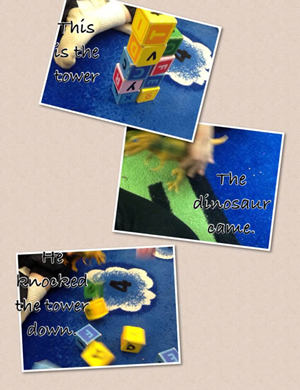
Daniel was a little boy in my kindergarten class who was very quiet and kept mostly to himself. When I'd try to engage him, he'd usually reply with only one- or two-word sentences and was always shy about sharing things with the class.
One day I saw Daniel making something with Lego. I knew I needed a creative way to get him talking about it, so I grabbed my iPad and took a few photos of him and his creation as he worked on it. I then used one of my favourite apps, Pic Collage, to put the pictures together in a fun way.
I then went over to him and exclaimed, "Look, Daniel! I took some pictures of you playing with the Lego! What were you building?" Daniel immediately brightened up when he saw the photos. He pointed to them excitedly and, to my surprise, started to tell me all about what he made! It was a wand that was used for magic! As he talked, I typed what he said beneath the pictures to create a story. I then asked him if he wanted to share the story with the class and he said yes.
Using the photos as a reference seemed to take some of the scare away about talking in front of the class, and Daniel re-told his story to the other children. I had never heard him talk so much and with so much enthusiasm!
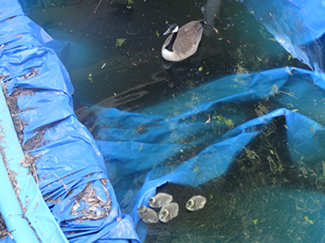
A few months ago, I looked out into my backyard to find a big surprise on the tarp covering my pool ... I thought my 2 ½ year old great niece would love to hear the story, so I went on the computer and sent the following email to her dad’s email address, along with this photo:
Dear Babba (my nickname for her),
Yesterday we found this mommy goose and her babies in our pool. The mommy was going “quack quack” and swimming with her babies. The pool has a cover on it and they were swimming in the dirty water on top of the cover. The problem was that the babies wanted to climb out of the pool, but they couldn’t get out because the pool cover is slippery. They kept trying and then falling back into the pool. So I put a big, wide piece of wood in the pool so they could climb onto it and get out of the pool. So they all climbed out and so did the Mommy and they were walking around the backyard – except for one baby who was lost and was running up and down by the pool and couldn’t see where his mommy had gone. So I chased him and picked him up. He was so small and soft. I took him to his mommy and he ran to her and then he stayed with her.
Maddie wanted to chase the geese so I had to keep her inside. Then a cat appeared and was going to chase the geese, but I chased him away. Last night, the geese slept in the back yard and this morning, I found someone who works to help animals, and he came and took them to a nice park with a little river nearby. Now they are settled in their new home and Maddie can run in the backyard again.
Love,
Auntie Elaine
My nephew read this story to his daughter many times, and he told me she talked about little else for days. Even now, when she comes to visit, she brings up the story and we talk about it.
This was a case of technology making it easy for us to share a story and interact about this interesting topic. It was pretty simple, but very powerful.
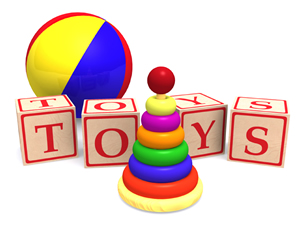
During a construction themed unit I had a group of 4-year old students playing with wooden blocks on the floor. I noticed they were imitating each other in the way they were building structures. I wanted to hear them use vocabulary from the books we had read. Children had been introduced to the idea that an architect draws plans and asks someone else to build for them. So I used the interactive smartboard to draw simple shapes and put them together, calling myself an "architect". Students figured out how to build what I had drawn. This led to several days of children taking turns being the "architects" using the smartboard to draw their plans and "builders" using the blocks to create the structures. They used new construction vocabulary from the books, such as “foundation”, “structure”, and “support beam.”
- Early Childhood Educator

I see lots of young children in my clinic who have very limited attention and listening skills....until it comes to playing on the iPad! I have downloaded lots of sound effects on to an iPad so the children can press a button and listen to the noise then go on a hunt to find a picture or object that matches. This is great for promoting the awareness and use of listening skills, and who/what/where questions, and can lead on to other great games that use the same skills (going on a listening walk for example).
- Speech-language pathologist

Jenna was very quiet and not using many words. As she loved storybooks, I made up a story using the Microsoft PowerPoint programme. Each slide was a different page. The first story was about the animals day out at the park. Jenna loved anything to do with animals! I made the animals "move" in the story with the "custom animation" menu. They said "Weeee!" as they slid down a slide one by one. When Jenna knew the story well, I paused before letting the animals slide... she started to say "Weeee" herself and was delighted she could "make" the animals slide.
At home Jenna often said "Weeeee" to her Mom to ask for the story to be read! She got lots of practice with Mom at home. It was a real favourite. She began to fill in words e.g. "Hi" and "Bye bye" and to say the animal sounds. She enjoyed other fun stories made on PowerPoint, e.g. a monkey climbing up-up-up a tree and then falling... "Down!". She would sit on her Mom's lap. At the word "down" her Mom pretended to drop Jenna between her knees. Jenna was eager to take part and very excited to say "down!". It was lovely to see her vocabulary growing with these PowerPoint stories.
- Speech-language pathologist

I run a social communication group for 4 and 5 year olds called Talking with Friends. I use the iPad to take pictures of the children participating in the various activities in the group e.g. free play, a mystery item game, story, playing an interactive game such as bowling or duck duck goose, craft, and snack time. I will then use the photos on the ipad to ask the children what their favourite activity was, to highlight some things they have learnt -- for example, how to share with a friend and how to look at their friend when they are talking.
Unfortunately the space doesn't lend itself to having the parents in the room and we don't have a 2 way mirror so we use the photos on the iPad for the children to share with their parents what they did in the session that day. We review the favourite activities and the things they have learnt to do - proud moments. This really helps build on narrative skills as well as social communication goals.
- Speech-language pathologist

In my classes, I like to hold the iPad and wait for my 2s and 3s to ask (verbally or non-verbally as appropriate for that child's stage of communication) for a turn. We like Preschool Monkey Lunchbox or apps by Duck Duck Mouse. Or I use Tap Speak or Answers HD to turn my iPad into a switch so that my friends can use it to make requests, such as at snack time.
- Teacher
I have a story of mistaken identity around technology. I have had a children's book for years that has a black cover made of rubber that looks like tire tracks. I noticed recently that children were picking it up, moving their fingers across it and pushing on the bumps on the cover. I realized that they thought it was a tablet. When I showed them it was really a book about construction machines one child said, "That's the coolest app I've ever seen! Where can my Dad get it?"
- Speech-language pathologist
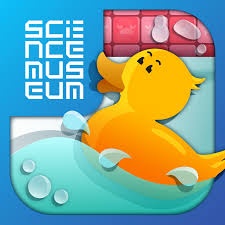
I love finding apps that are unique, fun & have lots of open-ended opportunities for vocabulary, concepts, requesting, cause-effect and more. The Science Museum Splash! app was a huge hit with one of my 4 year old patients in speech therapy today. Great for working on hot/cold, in/out, empty/full, float/sink and all the fun vocabulary of things you get to toss in the tub. Be sure to try out the hot water long enough to "steam" up the screen. I have lots of patients with ASD or similar special needs and the iPad has been a fabulous tool in therapy.
- Speech-language pathologist
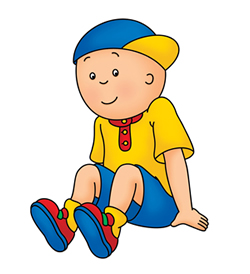
I use the apps from iRW which have parent-child interaction questions and comments. My daughter loves the stories (Curious George, Caillou...) and we are prompted to talk about what is going on, not just have me read the story (or worse, just have the iPad read the story...) We both enjoy this very much.
- Parent
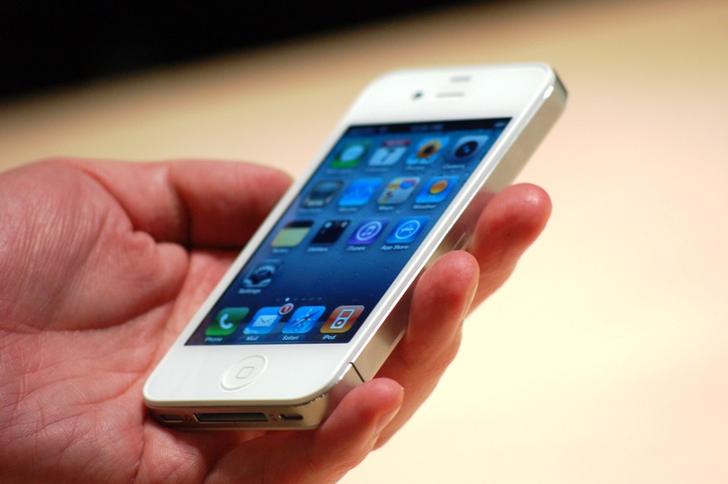
Children from my special school often travel to other schools in the state to participate in competitions and cultural exchange programs. But because we are a Tamil speaking school in a predominantly Malayalam-speaking state, the children often found it difficult and felt reticent about interacting with students from other schools. I once suggested that they could probably talk about the different gadgets (cell phones, wheelchairs, etc.) they see the other children using. The next time around, my students came back bursting with news about the newest wheelchair designs and the newest apps in mobile phones!
- SLP

Daniel is a child who LOVES playing games on tablet devices. But, he prefers to just “click” to figure out how to successfully play games. As his speech therapist, I often used his favorite tablet apps to help improve his listening skills. Using wait time and cues, I helped him learn how to successfully play each game by listening to verbal directions. His listening skills improved in and out of therapy sessions. Before beginning speech therapy services, Daniel’s frequent tantrums were upsetting and confusing to his parents. His Mom noticed that he seemed to not understand what was being asked of him and his tantrums tended to escalate from there. A language evaluation showed that her instincts were right on. Daniel’s expressive language skills were in the average range. But, his comprehension skills fell in the significantly delayed range. No wonder he was frustrated! After 6 months of speech therapy services, Daniel’s listening comprehension had improved into the average range! Although he still gets frustrated sometimes, his frustration now is more typical for a 3 year old. His parents are more comfortable keeping high expectations for his behavior because they know he understands what they are asking him to do.
- SLP

While many apps are just fantastic, I think the simple use of the video function of an iPad as a 're-playable' mirror is of immense value. One of my little clients relied on extremely loud, high-pitched squeals to 'speak'. Once in therapy, I made him a clown face with three interchangeable mouth shapes (oo ar and ee). I then videoed me doing these sounds. He immediately grabbed the iPad, watched it and started doing the sounds too. We videoed his attempts and emailed them home, where he delighted in showing them to everyone and replicating them live. He was fascinated with comparing me to the video and seeing his mouth moving, in a way that was able to be captured and replayed (unlike an ordinary mirror). Within weeks he was using simple words. This also worked wonders for a ten year old boy with ASD who rarely spoke until we did the same thing. It really created some joint attention! Within weeks he was saying more and now three months on, he is requesting items verbally and reading aloud. Generally too, parents find the camera function very easy to use while they are gaining confidence in the use of the technology and apps.
- Speech-language pathologist
I used the iPad to make a toddler speak by showing him pictures of him with his family members. He began to speak and point to those pictures while sharing his thoughts with the others. It had been quite a challenge before to get him to speak before.
- Parent
Tech Tips
Here are some fun tips for taking your everyday technology-related activities and adding interaction to help build your child’s language and literacy skills.
Build children’s everyday vocabulary

When going over the menu with your child at a restaurant, use your smart phone to help him discover the meaning of words he doesn’t know. If there’s a word on the menu that your child isn’t familiar with, search for the word on Google to show your child a picture and give a simple definition. For example, “Look, this is a croissant. It’s a sweet pastry shaped kind of like a banana!”
Keep the conversation going

Let your child help you choose a ring tone for your cell phone or a background picture for your tablet. Keep a conversation going about what the different ring tones sound like (for example, “This tone sounds like a quacking duck! I wonder if there are other animal ring tones?”) or about what’s happening in the background photo your child chose (for example, “That’s you blowing out your candles! Do you remember what else you did on your birthday?”).
Build knowledge of the alphabet

While browsing through your music library on your computer, phone or tablet, ask your child what song he wants to hear. When he gives you a title, talk about the first letter in the song and show your child how you find it. For example, “
Old McDonald starts with an
O, so let’s look in the ‘
O’ section.” Make sure you point to the letter
O on the screen.
Helpful resources
References
- Hillman, M. & Marshall, J. (2009). Evaluation of Digital Media for Emergent Literacy. Computers in the Schools, 26, 256–270.
- Klerfelt, A. (2007). Gestures in conversation – the significance of gestures and utterances when children and preschool teachers create stories using the computer. Computers & Education, 48, 335–361.
- Korat, O., Shamir, A., & Arbiv, L. (2011). E-books as support for emergent writing with and without adult assistance. Education and Information Technologies, 16, 301–318.
- Moody, A. K., Justice, L. M., & Cabell, S. Q. (2010). Electronic versus traditional storybooks: Relative influence on preschool children’s engagement and communication. Journal of Early Childhood Literacy, 10(3), 294–313.
- National Association for the Education of Young Children and the Fred Rogers Center for Early Learning and Children’s Media. (2012). Technology and Interactive Media as Tools in Early Childhood Programs Serving Children from Birth through Age 8. Retrieved online: https://www.naeyc.org/files/naeyc/PS_technology_WEB.pdf
- Neumann, M. M. & Neumann, D. L. (2013). Touch Screen Tablets and Emergent Literacy. Early Childhood Education Journal, 41(5).
- Parish-Morris, J., Mahajan, N., Hirsh-Pasek, K., Michnick Golinkoff, R. & Fuller Collins, M. (2013). Once Upon a Time: Parent–Child Dialogue and Storybook Reading in the Electronic Era. Mind, Brain, and Education, 7, 200-211.
- Salmon, L. G. (2014). Factors that Affect Emergent Literacy Development When Engaging with Electronic Books. Early Childhood Education Journal, 42, 85–92.
- Shamir, A., Korat, O. & Fellah, R. (2012). Promoting vocabulary, phonological awareness and concept about print among children at risk for learning disability: can e-books help? Reading and Writing, 25, 45–69.
- van Daal, V. & Sandvik, J. M. (2013). The Effects of Multimedia on Early Literacy Development of Children at Risk: A Meta-analysis. In A. Shamir & O. Korat (Eds.), Technology as a Support for Literacy Achievements for Children at Risk, Literacy Studies 7, (pp. 73-119). Dordrecht, Netherlands: Springer.